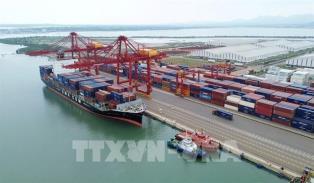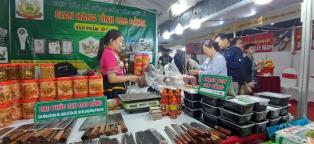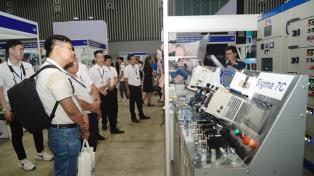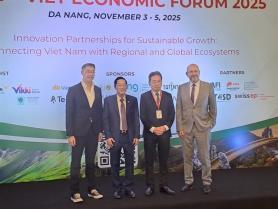A key highlight of the event was the official introduction of Amazon Global Logistics in Việt Nam, making the country only the second in the world designated as an export origin point for FBA shipments.

Ly Ly Cao
HÀ NỘI — Việt Nam's position in the global digital export landscape is solidifying, as Amazon Global Selling announced an expanded strategic vision for 2026, alongside the launch of Amazon Global Logistics (AGL) services connecting Vietnamese manufacturers directly to the US.
The announcements were made at Amazon Global Selling's Annual Conference 2025 in Hà Nội on November 6, the largest of its kind in Việt Nam, bringing together more than 1,500 entrepreneurs, manufacturers and industry partners.
Amazon emphasised that Vietnamese sellers continue to show strong momentum in 2025.
By July, the number of products sold by Vietnamese partners on Amazon had increased nearly 35 per cent compared with the same period the previous year, while the volume of goods shipped via Fulfilment by Amazon (FBA) rose by almost 40 per cent.
This performance reflects both rising international demand and the growing capability of Vietnamese businesses to manage global e-commerce operations at scale.
"More than 20 international marketplaces within Amazon's network offer diverse pathways for brand builders, manufacturers and partners worldwide," said Jim Yang, head of Amazon Global Selling Expansion in APAC.
"Việt Nam's entrepreneurial mindset and manufacturing capability create powerful opportunities to connect local strengths with worldwide customers."
Market data from Amazon points to five product categories – home, kitchen, health and personal care, apparel, and beauty – as the most competitive for Vietnamese sellers.
A growing cohort of domestic brands has begun building global recognition in these segments, advancing beyond contract manufacturing into brand ownership and marketplace-led retail.
The strategic focus for 2026 centres on developing Việt Nam into a high-quality e-commerce export hub in Southeast Asia by leveraging logistics infrastructure, digital transformation and brand-building capacity.
Speaking at the conference, head of Amazon Global Selling for Southeast Asia Larry Hu said that Việt Nam's export-driven economy and rapid digitalisation are converging at a pivotal moment.
"Việt Nam is well positioned to move from a manufacturing base to a creator of global brands," Hu said.
"Our efforts are directed toward helping businesses elevate ‘Made in Việt Nam' into a recognised global standard, built on innovation, product quality and competitiveness."
A key highlight of the event was the official introduction of AGL in Việt Nam, making the country only the second in the world designated as an export origin point for FBA shipments.
AGL ensures seamless cross-border logistics from factory pick-up to delivery into Amazon's fulfilment centres in the US, including ocean freight, consolidation options, customs handling and warehousing integration.
Shipping routes will run from major ports in Hải Phòng and HCM City to key US gateways such as Los Angeles, New York, Baltimore and Seattle.
By maintaining control over the full logistics chain, AGL aims to reduce both operational complexity and cost volatility for exporters, historically one of the biggest barriers to scaling direct global sales.
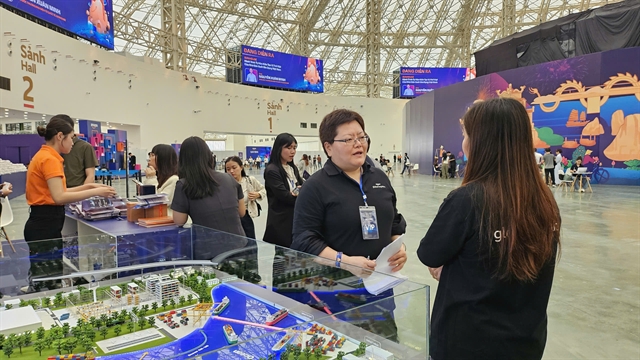
The conference also spotlighted examples from other Asian markets illustrating how manufacturing regions have shifted into brand-led, innovation-driven global commerce.
Yang referenced the transformation of the Pangchun furniture manufacturing cluster in northern China, where factories previously dependent on offline wholesale buyers learned to apply consumer review data to redesign products and used modular engineering to cut logistics costs by 30 per cent, while reducing minimum production runs from 1,000 units to 100.
The shift enabled small-batch, design-led global selling and delivered more than 20 per cent annual export growth for the cluster, with one-third now coming from e-commerce.
Yang also pointed to the rise of South Korea's beauty sector, where brands such as Medi-Q leveraged Amazon's market insight tools to identify new consumer trends, build direct brand presence and capture leading sales positions in major global shopping events, a path that contributed to a corporate valuation exceeding US$5.8 billion.
"These stories demonstrate what happens when manufacturing capability meets innovation and a direct understanding of customer needs," Yang said.
"Việt Nam stands at the threshold of similar global brand-building opportunities."
The narrative emerging from the conference suggests that Việt Nam's e-commerce export expansion is no longer viewed simply as a new sales channel, but as part of a broader industrial shift in value creation, from volume-based production to design-led, technology-enabled competitiveness on the world stage.
"It is still day one for Việt Nam in global e-commerce. The next wave of internationally known brands can be built from here," Hu said. — BIZHUB/VNS

